 Sale is ending soon
Sale is ending soon
Xing Hang Jun Ware Flower Rim High Foot Cup
Xing Hang Jun Ware Flower Rim High Foot Cup
JUN WARE ⭐⭐⭐⭐⭐
 Star Seller. This seller consistently earned 5-star reviews, shipped on time, and replied quickly to any messages they received.
Star Seller. This seller consistently earned 5-star reviews, shipped on time, and replied quickly to any messages they received.
 Returns & exchanges accepted
Returns & exchanges accepted
- Your order will be shipped within 48 hours
Couldn't load pickup availability
Indulge in the exquisite taste of Xing Hang Jun Ware Flower Rim High Foot Cup. Crafted with the finest materials, this luxurious cup stands tall to elevate your drinking experience. Its high foot design adds a touch of sophistication and elegance to your tea time. Treat yourself to a truly premium cup today.
Share
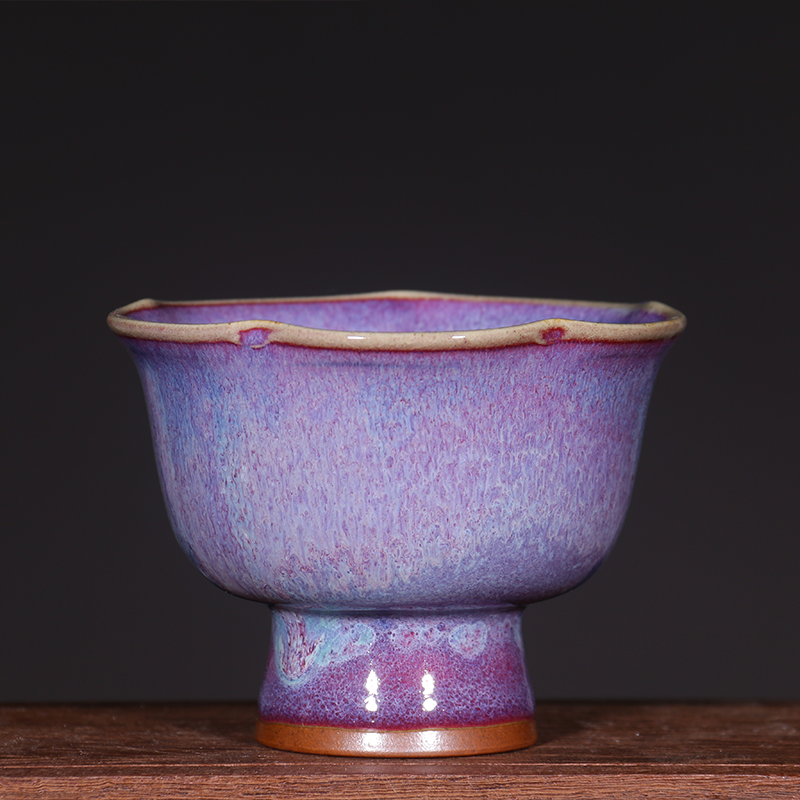
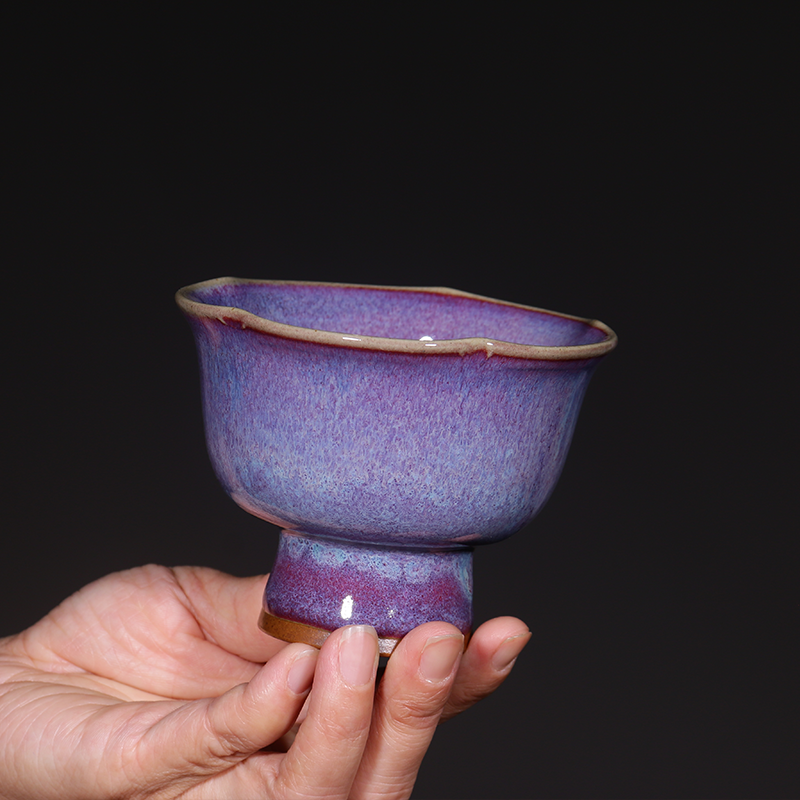
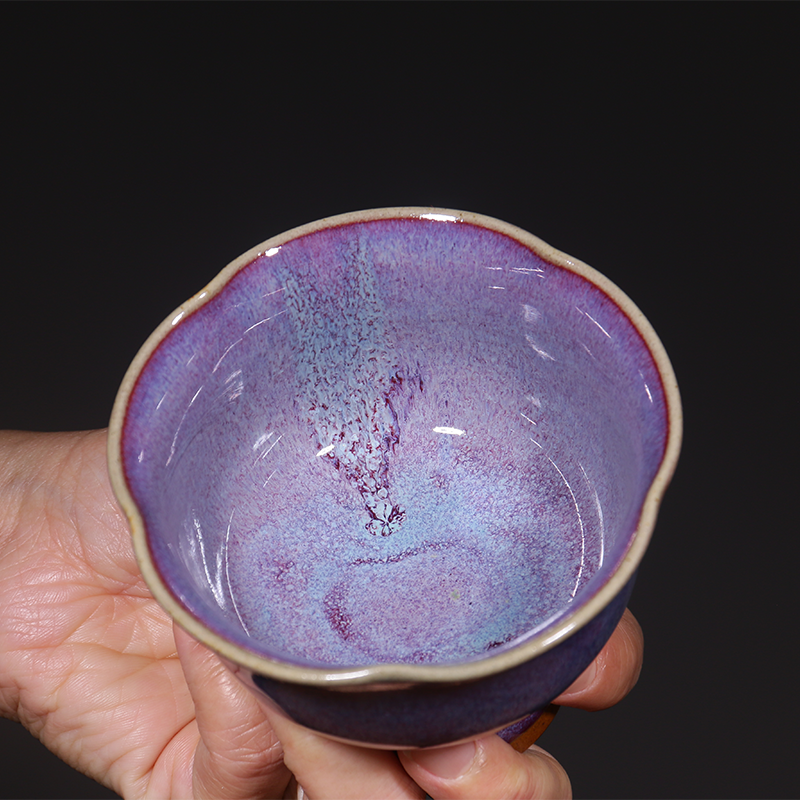
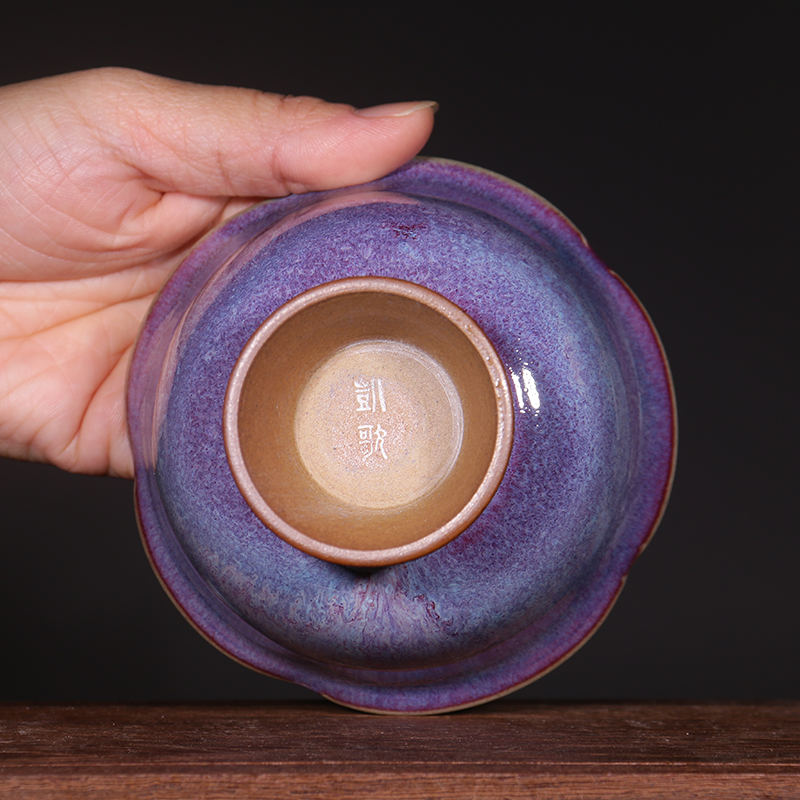
Features
Item Form: Jun Ware Tea Cup
Quantity: 1 Tea Cup
Capacity: Tea Cup 150ml
Size(Height x Width): 7.5cm x 10cm
Material: Jun Ware Glaze
Origin: Yuzhou, Xuchang, Henan, China
-

Celebrated Jun Ware Products
Xing Hang Jun Ware products are celebrated for their elegant taste, embodying the essence of traditional Jun Ware artistry.
-

Enhanced Social and Economic Impact
They have significantly enhanced both social and economic benefits, exerting considerable influence within the Jun porcelain industry and society at large.
-

Key Role of the Jun Ware Learning Center
The Jun Ware Learning Center, a key intangible cultural heritage project, plays a pivotal role in preserving and advancing Jun Ware's traditional crafting techniques.
-

Milestone in Jun Ware Craftsmanship
This project serves as a milestone of great significance, actively promoting the inheritance and development of Jun Ware craftsmanship.

Introducing the Xing Hang Jun Ware Flower Rim High Foot Cup
Discover the exquisite craftsmanship of the Xing Hang Jun Ware Flower Rim High Foot Cup, a pinnacle of elegance and cultural heritage. Crafted meticulously by skilled artisans, this cup embodies the rich traditions of Jun Ware from Yuzhou City, Henan Province, China.

Exquisite Craftsmanship
Each Xing Hang Jun Ware cup is meticulously handcrafted, reflecting centuries-old techniques passed down through generations. The high foot design and delicate flower rim are meticulously carved and fired in traditional kilns, resulting in a stunning blend of beauty and functionality.
The Artistic Legacy of Ren Family's Jun Ware
-

Promotion of Traditional Culture
Xing Hang Jun Ware aims to promote traditional national culture, adhering to traditional crafting techniques. It utilizes the ancestral Jun Ware craftsmanship of the Ren family to create high-quality artworks with high technological content and strong technical capabilities.
-

Commitment to Craftsmanship
Currently, there is one national-level master artist, five provincial-level master craftsmen, two provincial-level craft artists, two engineers, four technicians, and seven skilled workers.
-

Artistic Excellence and Technological Prowess
Xing Hang Jun Ware integrates art inheritance, scientific research and development, and the production of high-end Jun Ware artworks, fostering a unique and rich cultural and artistic atmosphere.
Cultural Heritage
The Xing Hang Jun Ware Flower Rim High Foot Cup not only showcases the technical prowess of its makers but also embodies the cultural significance of Jun porcelain. It serves as a testament to the artistic heritage and craftsmanship that define this renowned style of Chinese ceramics.
Aesthetic Appeal
Admire the graceful curves and vibrant glaze of the Xing Hang Jun Ware cup, which captures the essence of natural beauty and artistic expression. Perfect for tea enthusiasts and collectors alike, it elevates any tea-drinking experience with its exquisite design and historical charm.
Master of Tradition: Ren Xinghang and the Art of Jun Ware
Ren Xinghang, born in 1955 in Shenwu Town, Yuzhou, is the 9th generation inheritor of the esteemed Ren family's Jun Ware legacy. He graduated from the Thermal Engineering Department of the Jingdezhen Ceramic Institute in Jiangxi Province. Ren Xinghang holds esteemed titles including Chinese Master Craftsman, National Representative Inheritor of Intangible Cultural Heritage for Jun porcelain firing technique, Vice President of the Chinese Academy of Non-Material Cultural Heritage Art Design, National Master Craftsman of Ancient Ceramic Arts, Chinese Master Craftsman of Ceramic Arts, Director of the Artistic Committee for China's Five Great Kilns under the China Folk Artists Association, Committee Member of the Expert Committee on Intangible Cultural Heritage at the Hong Kong Chinese Non-Material Cultural Heritage Museum, Director of the Jun Porcelain Kiln Museum, and Visiting Professor at Xuchang University.
Preserving Cultural Heritage: Renxing Hang's Journey as a Master Craftsman
Ren Xinghang's expertise spans the entire spectrum of Jun porcelain craftsmanship, encompassing kiln construction, glaze formulation, design, and firing techniques. He has dedicated his life to preserving and advancing the renowned techniques of the Ren family, ensuring the continuation of Jun porcelain's legacy. His contributions have been widely recognized both domestically and internationally, making him a pillar of cultural heritage conservation and artistic innovation in the field of ceramic arts.
Timeless Elegance: Discovering Xing Hang Jun Ware
-

Introduction to Xing Hang Jun Ware
Xing Hang Jun Ware represents a pinnacle of Chinese ceramic artistry, renowned for its exquisite craftsmanship and historical significance. Originating from the Northern Song Dynasty, this distinguished ware continues to captivate with its timeless elegance and cultural heritage.
-

Craftsmanship and Techniques
Each piece of Xing Hang Jun Ware is meticulously crafted using traditional techniques passed down through generations. Characterized by its delicate blue-green glaze, fine crackle patterns, and refined forms, these ceramics exemplify the art of simplicity and understated beauty.
-

Historical Significance
Dating back over a millennium, Xing Hang Jun Ware holds a revered place in the history of Chinese ceramics. Known for its association with imperial courts and elite collectors, these pieces reflect the artistic achievements and aesthetic preferences of their time.
-

Appreciation and Collectibility
Today, Xing Hang Jun Ware continues to be cherished worldwide for its rarity and artistic merit. Collectors and connoisseurs value its intrinsic beauty and cultural significance, making it a coveted addition to prestigious collections and a testament to the enduring appeal of Chinese ceramic art.
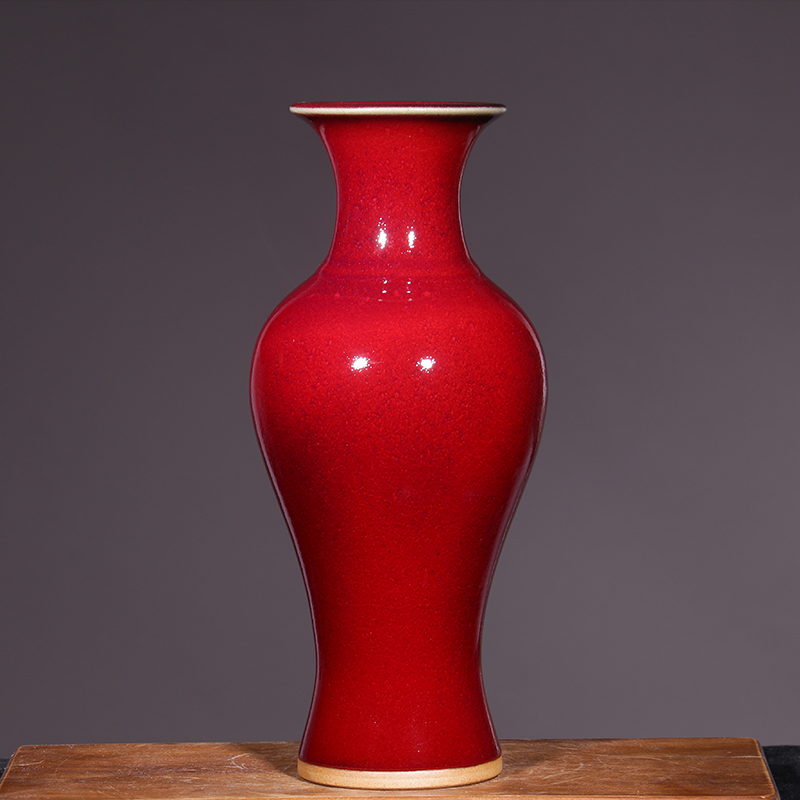
Masterful Legacy: Ren Kaige and the Art of Xing Hang Jun Ware
Ren Kaige, the 10th generation heir of the renowned Ren family in the world of Xing Hang Jun Ware, serves as the Artistic Director of Xing Hang Jun Ware. From a young age, he apprenticed under his grandfather, the first director of the state-owned Jun porcelain factory established after the founding of the People's Republic of China. Later, he continued his education under his father, Ren Xinghang, a Chinese Master Craftsman and National Representative Inheritor of Intangible Cultural Heritage for the Jun porcelain firing technique. Ren Kaige's training encompassed kiln construction, glaze formulation, design, and firing techniques, ensuring his mastery and impeccable craftsmanship.
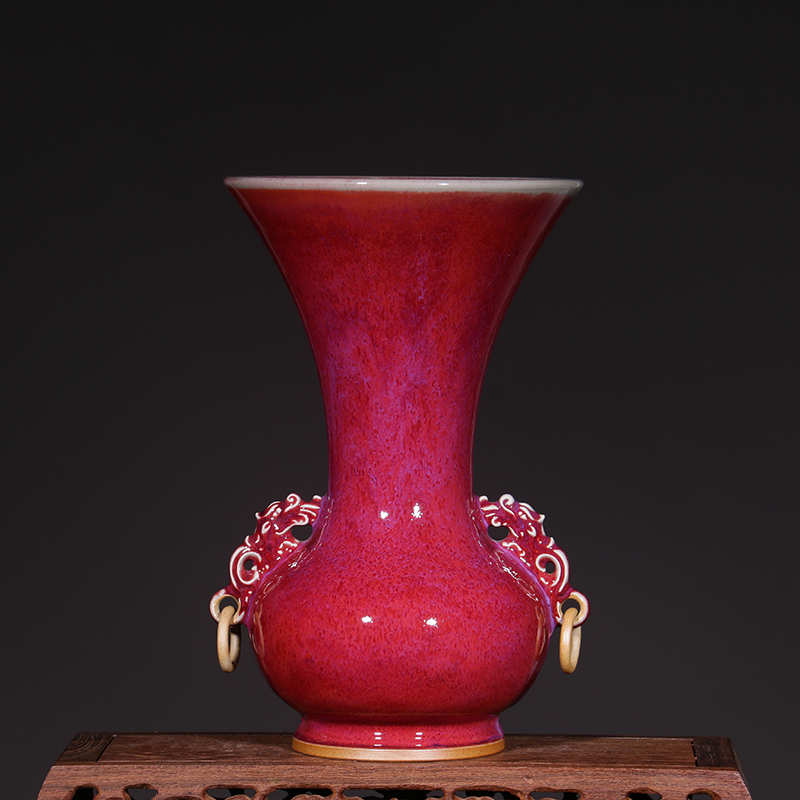
Preserving Heritage: Ren Kaige's Journey as an Artistic Director
Ren Kaige's works are distinguished by their robust forms, rich glaze variations, natural luster, and superior quality, earning him high acclaim in the world of Jun Ware. Several of his pieces have been awarded the prestigious "Grand Earth Award" and "Hundred Flowers Award" gold medals. They are proudly displayed in prominent institutions such as the Great Hall of the People, the Chinese National Master Craftsmen Museum, and several international embassies and collections of international friends abroad.
Customer FAQ
What is Chinese Jun Ware?
Jun ware is a type of Chinese pottery, one of the Five Great Kilns of Song dynasty ceramics. Despite its fame, much about Jun ware remains unclear, and the subject of arguments among experts.
What are the characteristics of Jun Ware?
Intended for the cultivation and display of plants, numbered Jun wares are high-fired stoneware ceramics esteemed for their fine potting, bold forms, and strikingly beautiful blue and purple or magenta glazes.
What is Chinese Jun Ware history?
One of the “Five Great Kilns,” Jun stonewares with their thick, lavender-blue glaze and areas of purple and violet were formerly known in the West as “Clair de Lune” and came from the Henan province. As of today, over a hundred kiln sites have been discovered. Some specialised in producing porcelain ware for the Imperial courts, with a history dating back to the Tang Dynasty. According to tradition they were mainly manufactured under the Northern Song Dynasty at Yangzhe which under the Jin Dynasty was renamed Junzhou. The name “Junuao” only appears in Chinese texts in the Ming period; for this reason some experts have reservations about the dating. However, the excavations at Jungzhou in 1964 have established that Jun ware appeared in the Song period with increased manufacture during the Jin period.
The signature look of Jun ware are the grey or buff-coloured stonewares with their turbid glaze. They were first biscuit fired at a low temperature, then covered with a ferruginous slip and several layers of glaze containing rice stalk ash, which is rich in silica. After a second firing at a higher temperature, the surface of the piece becomes rough, pitted with little “v” or “y” – shaped cracks. Through the microscope, little bubbles of silica suspended in the glaze are visible. The opalescent effect of the surface is created by light playing on these imperfectly vitrified particles and the irregular surface through the thickness of the glaze.
By using copper oxide as pigment, the Jun kilns successfully produced copper-red glaze in reducing conditions. This was a breakthrough in ceramic technology. Use of copper oxide as colouring agent was technically difficult, as the chemical components in the basic glaze, the temperature, and the atmosphere were all very sensitive factors. Even the slightest deviations from the method resulted in an undesirable shade of red.
There are also some Jun ware pieces, with the glazing varying from lavender on the inside to violet purple on the outside. The outside is sometimes streaked like fur. The base is glazed in brown; a carved number varying from 1 to 10 is visible on the bottom. It is not known exactly what the numbers signify – either a serial number or indication of size. Round the bottom there are also numerous spur marks from the kiln. The numbered pieces seem to be from the Jin period. However, some numbered pieces have been found in the Song kilns in the course of recent excavations. Other Jun ware, with heavy, less highly fired body called ma-jun in Japan, belong to the Yuan period, Jun ware vessels such as flower pots, cauldrons, and writing-brush basins were all modelled after ancient bronze vessels used for rituals. There were similarities between Jun ware and those of Guan, Ru and other kilns of the same time period, because they were all intended for serving the courts. Flowers and floral patterns were the fashionable form of decoration for porcelain at the time. However, Jun ware did not use decorative patterns, but the vessels themselves came in the shapes of flowers. Common shapes were flowerpots, flat bowls, and writing-brush washbasins in the shape of Chinese crab-apple flowers, lotus flowers and pot bases made to resemble sunflowers. The latter are a truly unique feature of Jun ware.
Of the Five Great Kilns of the Song Dynasty, aside from Ding ware which had engraved or imprinted patterns as decorations, the kilns all produced undecorated porcelain. Of course this absence of ornamentation did not result in bland wares; rather it was a reliance on natural forms. The Ge, Guan and Ru kilns all produced celadon, and all three utilized crackle glaze as a form of decoration. The crackle glaze was caused by different degrees of contraction in different parts of the glaze. Thus when fired, the surface of the glaze would begin to crack. This may originally been an imperfection of the firing technology. However, porcelain artisans were able to take advantage of this defect and make it a decorative element.
Will my package be packed safely and where will my order be shipped from?
We pack your products carefully to ensure a trouble-free delivery of your goods. We regularly ship more than hundreds of packages per month, but only a few cause problems. We guarantee our products to arrive in perfect condition. If the items from your order are damaged during shipping, we are deeply sorry but please get in touch with our customer support with a detailed photo of the damage within 30 days of your delivery. We will exchange or refund as soon as we can confirm. All orders will be shipped from China. Our international shipping is offered through China post, DHL, and FedEx.















